What is Astrophotography
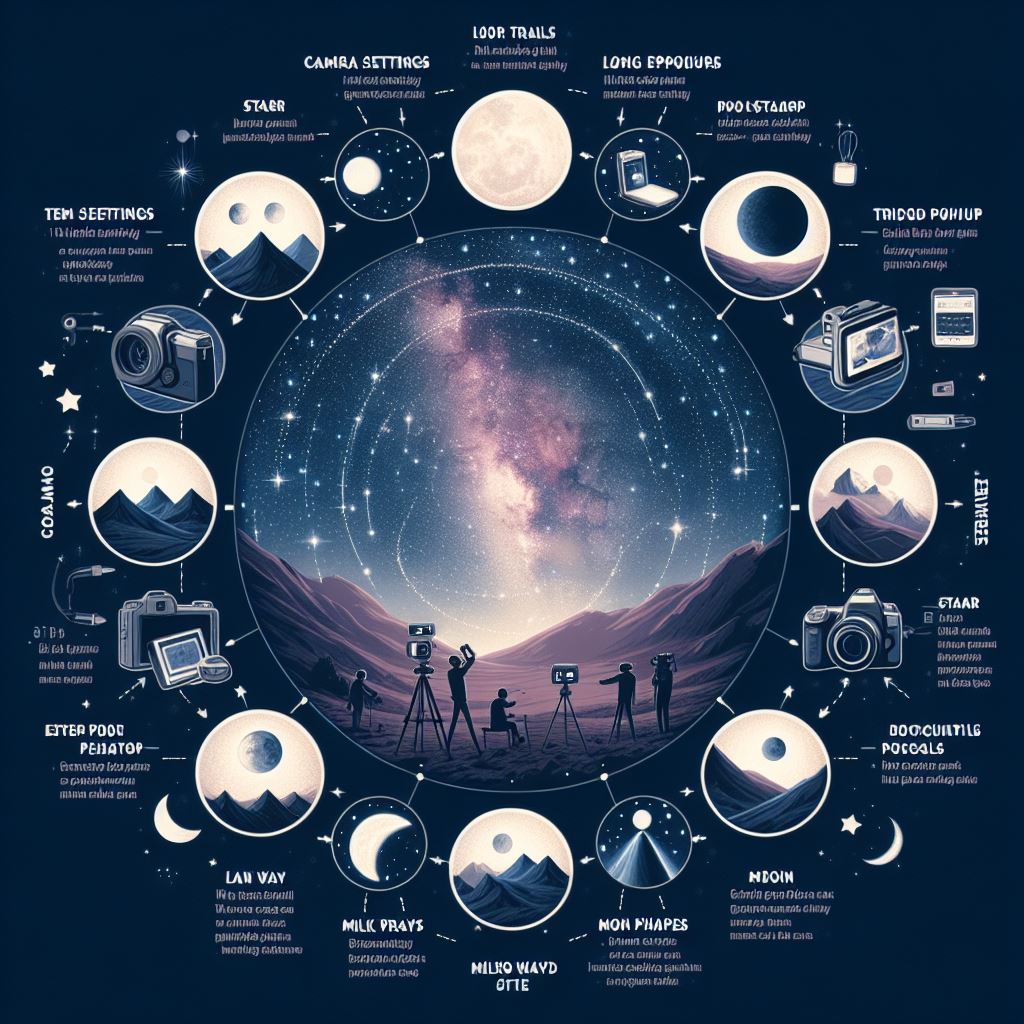
Astrophotography is a hobby that involves capturing images of celestial objects such as stars, planets, galaxies, etc using a special type of photography equipment. It combines elements of photography and astronomy, which requires patience and skill to produce stunning images of the night sky. Enthusiasts use long exposure techniques and often travel to remote locations to minimize light pollution and capture the beauty of the cosmos.
Purpose of Astrophotography
Astrophotography is the art and science of capturing images of celestial objects such as stars, planets, galaxies, and nebulae using specialized photography equipment.
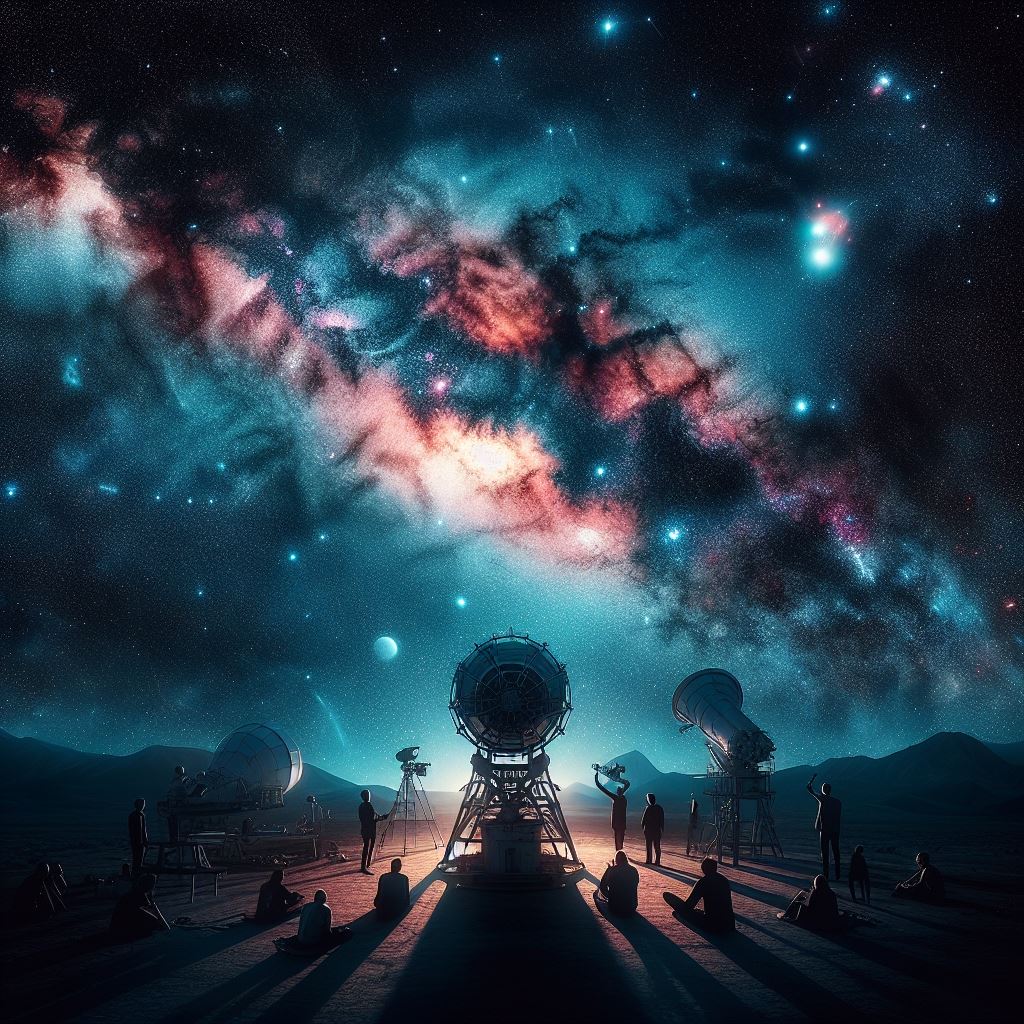
The purpose of astrophotography is to visually capture and share the beauty of celestial objects, inspire curiosity about the cosmos, contribute to scientific documentation, and provide a means of personal exploration and artistic expression.
Best Times
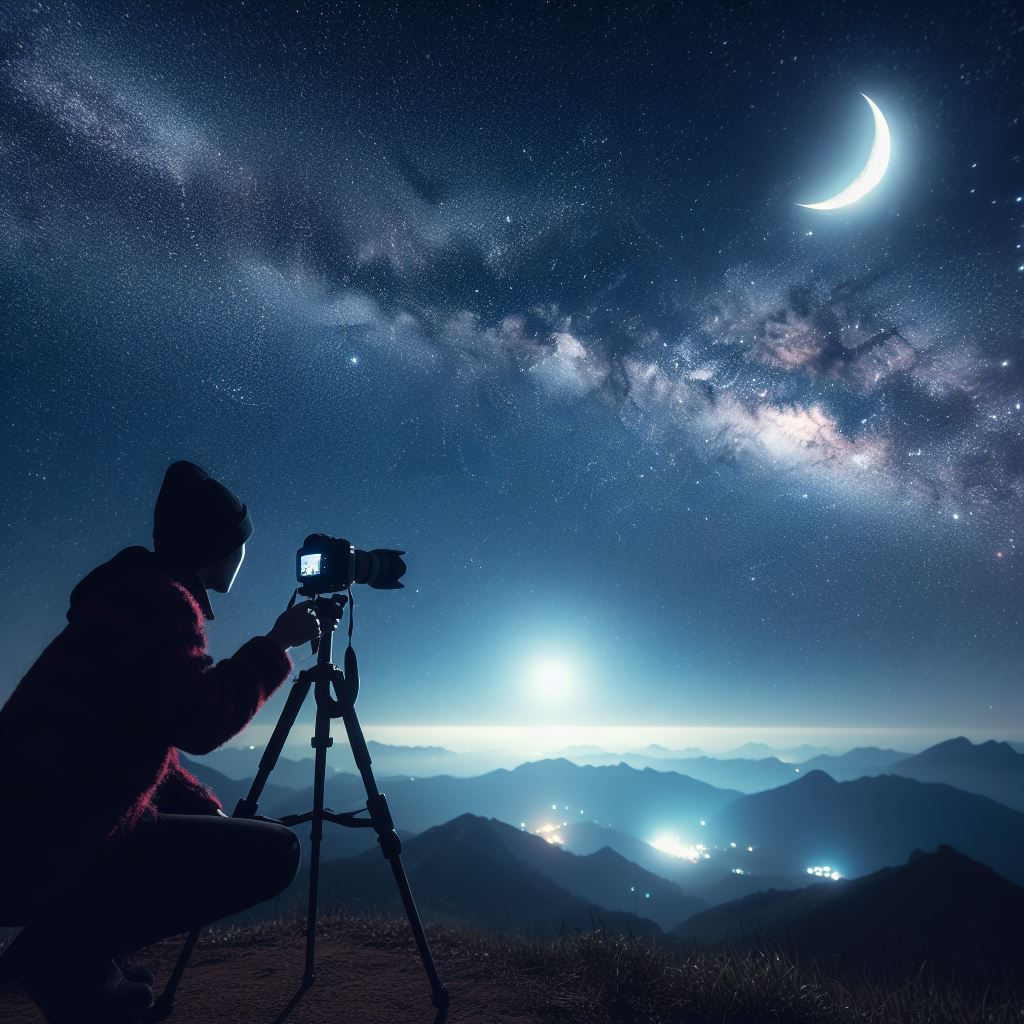
- During periods of minimal light pollution
- Clear nights with little to no moonlight, preferably during new moon phases
- During astronomical events such as a meteor shower, eclipses, and/or the passage of the Milky Way is across the sky
- Weather conditions, and personal preferences can also play a role in determining the best time for astrophotography
Best locations
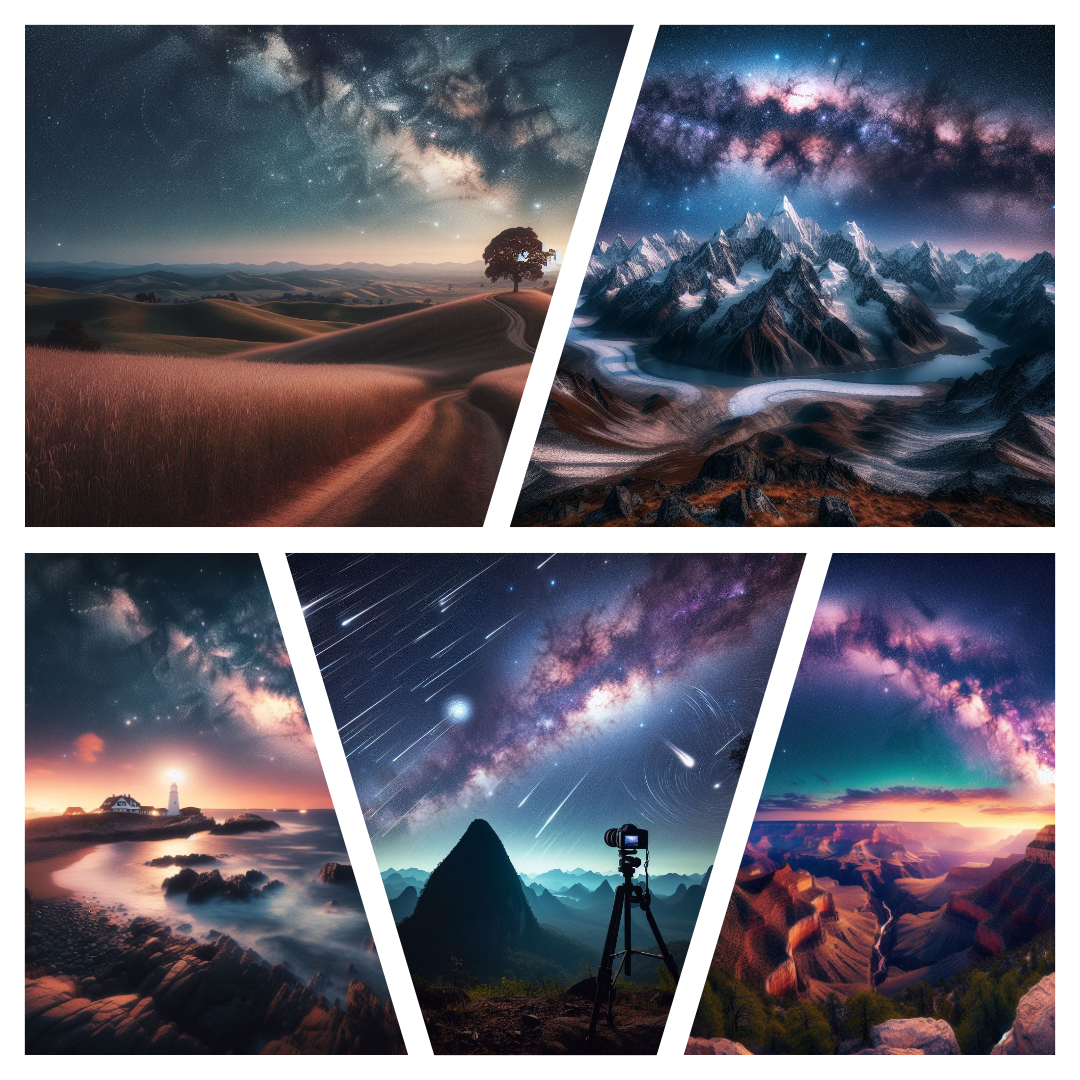
- Dark Sky Reserves
- Designated areas with strict lighting regulations to minimize light pollution, providing optimal conditions for astrophotography.
-
Examples:
- Natural Bridges National Monument in Utah
- Aoraki Mackenzie International Dark Sky Reserve in New Zealand.
- National Parks
- Remote areas within national parks away from urban centers offer excellent opportunities for astrophotography due to their dark skies and natural landscapes.
- Examples:
- Death Valley National Park in California
- Jasper National Park in Canada are popular choices.
- Coastal Areas
- Coastal regions with minimal light pollution and unobstructed horizons provide ideal conditions for capturing celestial phenomena.
- Beaches and seaside cliffs offer expansive views of the night sky, especially during clear nights.
- Mountains and High Elevations
- Elevated locations away from city lights provide clearer views of the night sky.
- Examples:
- Rockies in North America
- The Alps in Europe
- Countryside
- Rural areas and farmland away from urban development often have dark skies conducive to astrophotography.
- Seek out secluded locations with open fields and minimal light
Why to Start

- See Cool Space Stuff:
- You get to capture amazing pictures of the stars, galaxies, and other space stuff, which is pretty cool to look at
- Be Creative:
- It's like painting with a camera. You can create your own beautiful pictures of space.
- Learn about Space:
- You'll pick up interesting facts about stars, planets, and space while you're at it.
- You will feel Amazed:
- Seeing the universe up close through your photos can make you feel amazed and small in a good way.
- You get to Enjoy Nature:
- You can go to quiet places away from city lights and just enjoy being outdoors under the stars.
- You get to Make Friends:
- There are lots of other people who like astrophotography. You can join groups and share tips and photos with them.
- Relax and Have Fun:
- It's a peaceful hobby that lets you unwind and have fun while taking cool pictures of the night sky.
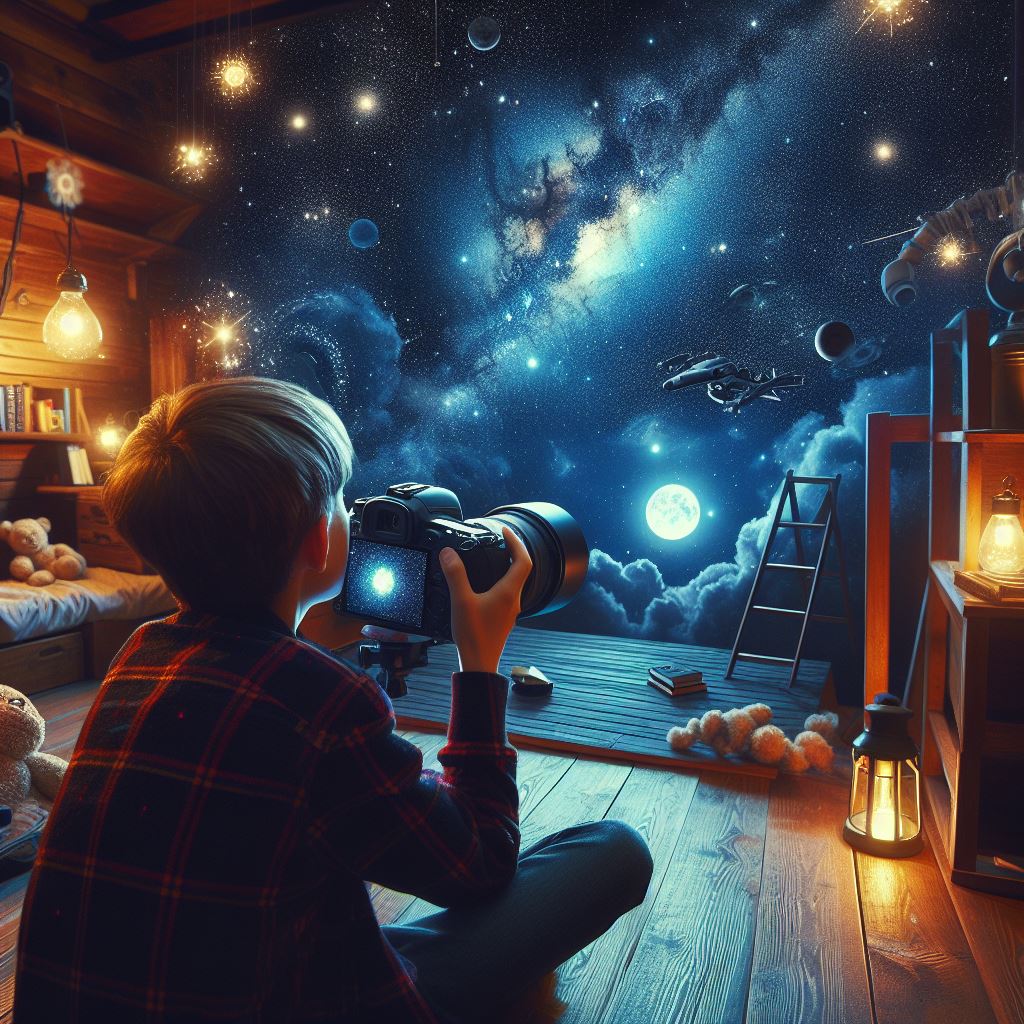
How to Start
- Learn the Basics:
- Start by familiarizing yourself with the basics of photography, including how to use a camera and adjust settings like exposure, aperture, and ISO.
- Get the right equipment:
- Invest in a DSLR or mirrorless camera with manual settings capability.
- Alternatively, you can use a smartphone camera with manual controls or a dedicated astrophotography camera.
- Consider purchasing a sturdy tripod to keep your camera steady during long exposures.
- If possible, acquire a telescope or telephoto lens to magnify distant objects in the Night Sky.
- Choose a Dark Sky Location:
- Find a location away from city lights and light pollution where the night sky is darkest.
- Dark sky reserves, national parks, or rural areas are ideal spots for astrophotography.
- Learn about different Astrophotography Techniques:
- Research different astrophotography techniques
- Examples:
- long exposure photography
- stacking images
- tracking celestial objects
- Experiment with different camera settings and exposure times to capture clear and detailed images of the night sky.
- Practice Patience and Presistence:
- Understand that astrophotography requires patience and practice to master.
- Don't get discouraged if your first few attempts don't turn out as expected.
- Keep practicing and experimenting with different techniques until you achieve the desired results.
- Join Communities:
- Connect with other astrophotography enthusiasts by joining online communities, forums, and social media groups.
- Share your photos, ask for advice, and learn from experienced astrophotographers to improve your skills.
- Stay up to date on Celestial Events:
- Stay updated on upcoming celestial events such as meteor showers, lunar eclipses, and planetary alignments.
- Plan your astrophotography sessions accordingly to capture these special events and phenomena.
- Be mindful of Weather Conditions:
- Check weather forecasts and plan your astrophotography sessions on clear nights with minimal cloud cover.
- Be prepared for cold temperatures and dress accordingly, especially if you'll be spending long hours outdoors.
- Experient and Have Fun!:
- Don't be afraid to experiment with different compositions, camera settings, and post-processing techniques.
- Enjoy the process of capturing the beauty of the night sky and have fun exploring the wonders of astrophotography.